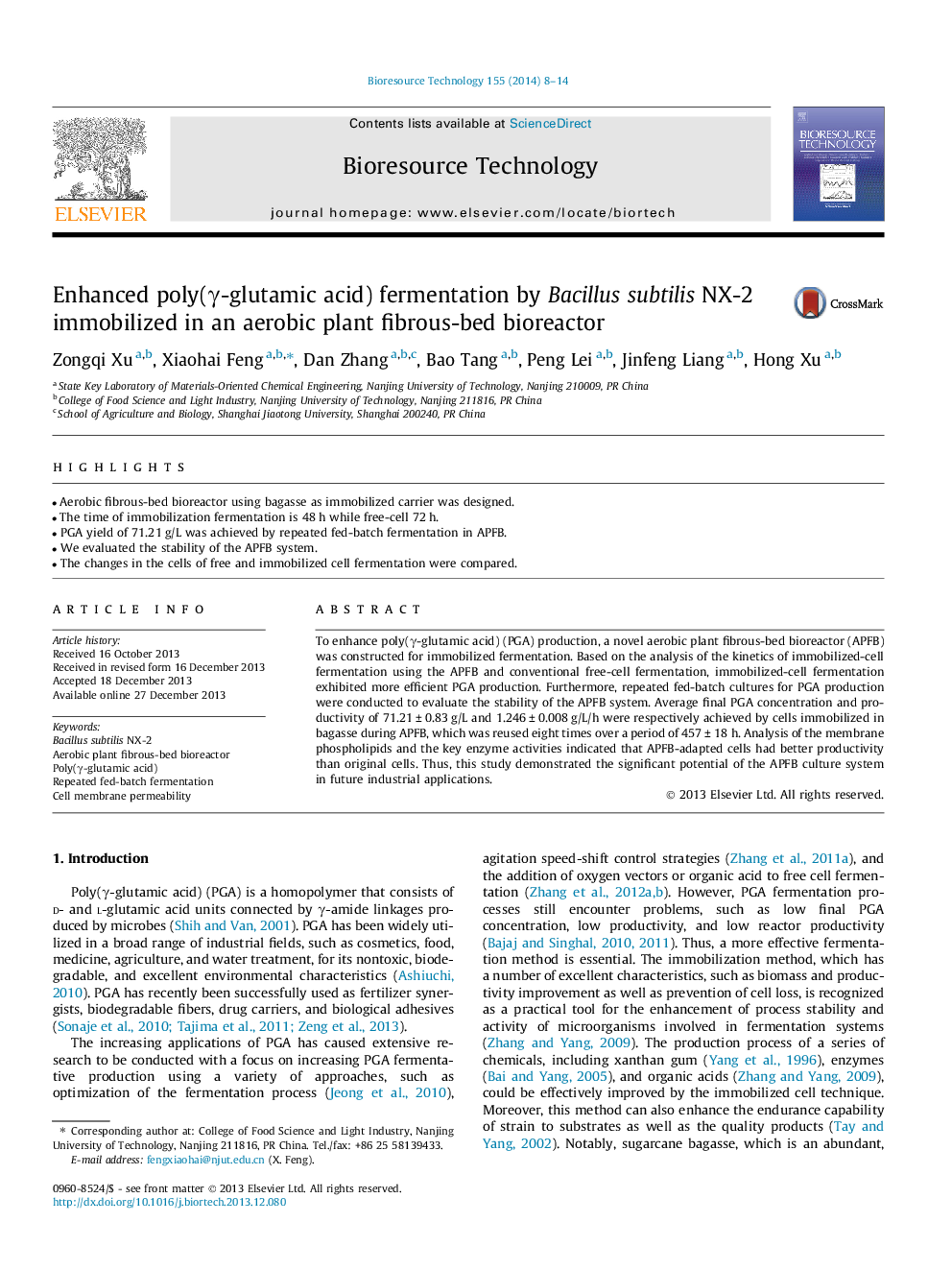| Article ID | Journal | Published Year | Pages | File Type |
|---|---|---|---|---|
| 680990 | Bioresource Technology | 2014 | 7 Pages |
•Aerobic fibrous-bed bioreactor using bagasse as immobilized carrier was designed.•The time of immobilization fermentation is 48 h while free-cell 72 h.•PGA yield of 71.21 g/L was achieved by repeated fed-batch fermentation in APFB.•We evaluated the stability of the APFB system.•The changes in the cells of free and immobilized cell fermentation were compared.
To enhance poly(γ-glutamic acid) (PGA) production, a novel aerobic plant fibrous-bed bioreactor (APFB) was constructed for immobilized fermentation. Based on the analysis of the kinetics of immobilized-cell fermentation using the APFB and conventional free-cell fermentation, immobilized-cell fermentation exhibited more efficient PGA production. Furthermore, repeated fed-batch cultures for PGA production were conducted to evaluate the stability of the APFB system. Average final PGA concentration and productivity of 71.21 ± 0.83 g/L and 1.246 ± 0.008 g/L/h were respectively achieved by cells immobilized in bagasse during APFB, which was reused eight times over a period of 457 ± 18 h. Analysis of the membrane phospholipids and the key enzyme activities indicated that APFB-adapted cells had better productivity than original cells. Thus, this study demonstrated the significant potential of the APFB culture system in future industrial applications.
